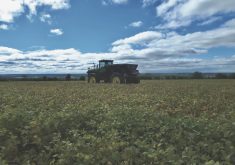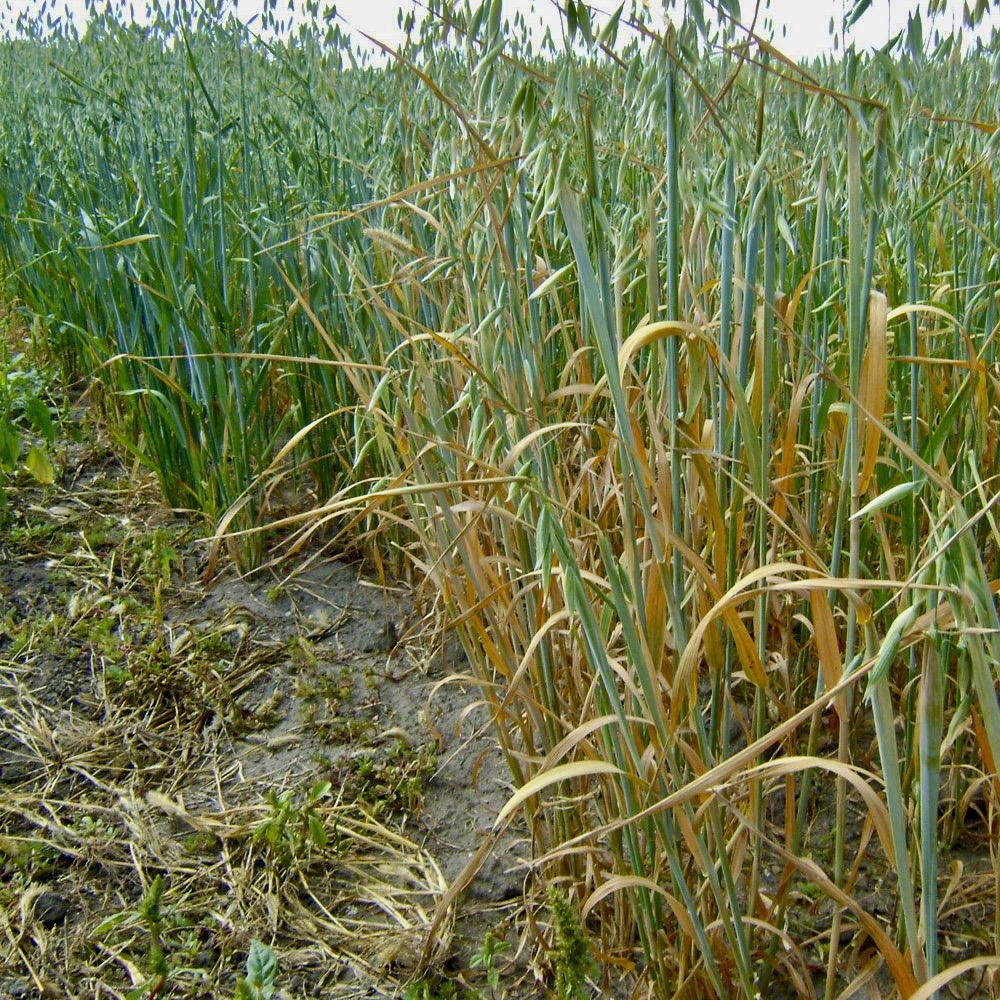In the past five to 10 years, few topics have been as polarizing as cover crops. Advocates praise their benefits. Detractors cast doubts. And in the midst of it all, there’s a flood of technological change, whether that’s something simple, like switching from red clover to a different species like oats, or whether it’s going to a multi-species blend, or inter-seeding covers into standing crops.
All you have to do is mention that phrase — “cover crops” — and the debate begins.
Late in 2020, Dr. Laura Van Eerd, Dr. Inderjot Chahal and Dr. Richard Vyn collaborated on an analysis of the economic benefits of cover crops. Van Eerd, professor of sustainable soil management at the University of Guelph’s Ridgetown Campus, began her work on the benefits of cover crops in 2007. A decade later, Vyn, an associate professor in the department of food, agricultural and resource economics at the Ridgetown Campus, began examining economic impacts based on several years of aggregated data.
Read Also

Producers aren’t panicking over tariffs and trade threats
The influence of tariff and trade uncertainity on farm business decisions.
In Van Eerd’s plots, there were four different cover crop treatments: oats, cereal (winter) rye, radish, and rye and radish together. They were grown in a rotation of grain and processing vegetable crops, including wheat, grain corn, soybeans, sweet corn, tomatoes and squash.
Profitability increased in vegetable crops, with radish and the radish and rye combination showing the largest positive impact on profits followed by cereal rye, while oats showed the least benefits — although they’re better than not planting a cover crop.
Grain crops saw decreases in profit margins with cover crops.
There are several caveats that go with those findings, says Vyn, adding that grain farmers could see greater value from cover crops if farmers receive credit for carbon sequestration. Another is the need for further long-term research on the impacts of cover crops. Vyn also notes Van Eerds’s data is from two locations in one area. (In a separate component of the research, Chahal measured soil organic matter and carbon in the plots.)
It’s worth noting the economics are based on production: There isn’t a good way to assess the value cover crops provide, such as minimizing erosion or keeping nutrients in the field.
“Whether cover crops translate into economic benefits is a little uncertain and variable,” he says. “It depends on the situation, and there’s a lot of variation in soil types and climate across Ontario. It’s important to note that these results are based on an experiment that was conducted in one area of the province.”
Variability the big hurdle
Diversity is often viewed as a positive, but in research work, it can present numerous challenges. In addition to variability in soil types or weather patterns, Vyn cites differences in planting equipment and seeding rates, not to mention preferences in types of cover crop species, which can confound efforts to standardize research parameters. While it’s a hurdle for evaluating economics, the variability presents lots of opportunities for growers to find the right cover crop for their operation.

“We’re digging a little deeper and when you do the economics, you have to impose certain assumptions, and in publishing research, you have to find a way to defend those assumptions,” Vyn says. “When you look at the cost of planting a cover crop, the cost of seed is relatively easy to determine, but what about the cost of planting? How do you figure out the cost per acre for that so it best represents Ontario farmers?’
From one operation to the next, planting costs vary depending on the type of equipment, leaving Vyn to use assumed values based on custom seeding rates. At least those assumptions are defendable in published results. The challenge with custom rates, however, is they tend to be higher than a farmer’s own operating costs, based on the assumption that a farmer owns their own planting equipment.
“What we found is that for profit margins, using cover crops with grain crops has reduced profits a little bit in a couple of cases,” says Vyn. He adds that revenues from higher yields don’t cover those costs, yet if a grower is applying cover crop seed with their fertilizer, it can reduce seeding costs. “That’s why we use some assumptions to try to generalize results, but now we’re going to look at a specific scenario where ‘this’ producer is seeding and using a certain approach, and figure out exactly what it would cost that producer.”
Another point to note in relation to cover crop profitability in vegetable crops, adds Vyn, is that these crops tend to be harvested earlier, allowing for a longer growth period for subsequent cover crops.
Asked if cover crop management is trending along the same lines as no-till production — where the longer you stick with the system, the greater the likelihood of seeing quantifiable benefits — Vyn concedes it’s possible.
“It’s hard to say for sure and it could depend on what your soils are like and the different management practices involved,” he says. “But there certainly is that potential.”
It’s also an indication of the need for more long-term research.
In her own little corner
The 2021 growing season will be the ninth year that Jennifer Doelman has been growing cover crops on her family’s farm near Douglas, in Renfrew County. She began in 2012 following a Phase 3 drought which caused a shortage of feed. Initially, she and her husband Mike reasoned they could sell it as feed. However, local farmers were more interested in obtaining it free of charge, so they plowed it down.
Instead of viewing that as a failure, the Doelmans treated it as an important starting point, adopting an overall view of cover crops being part of a “systems approach,” along with increased diversity in their crop plans. They’re now seed producers and can have six or seven different crops in the ground, including “peaola,” a combination of forage peas and canola, grown together.
The other crops grown in varying rotations from one year to the next are corn, wheat, soybeans, barley, canola, flax, oats, fall rye, triticale, forages and sunflower. Living in a “rain shadow” between the Bonnechere Ridge system and the Ottawa River and farming on silty-clay soils that lean more to the clay side, Doelman acknowledges her biggest limiting factor is available moisture. The region’s crop heat units are roughly equivalent to Guelph, yet the growing season is about a week shorter, so she relies on cover crops and no-till farming to get the most out of the available climatic conditions.
For cover crops, Doelman follows two general practices, with red clover frost-seeded into winter wheat typically in early April, or with a cover of forage peas, oats and crimson clover. The family operates 2,400 acres, including 400 to 500 acres of fall-seeded wheat every winter, which she considers a cover crop, yet it’s one she can harvest. With red clover, it’s rarely successful and does well during years when winter wheat fares poorly. Still, she likes any cover crop that insurance will cover.

“The fact that crop insurance will cover some cover crops already shows it has value,” she adds. “Agricorp’s job is to serve its stakeholders so they’re not going to offer a service for something if they don’t see value in it. Being addressed as a risk priority is a no-brainer to me.”
After wheat, she doesn’t do an immediate burn-down, opting to bale most of the straw as a means of paying for the wheat. Her husband has developed a device to spread the chaff evenly across the width of the head and the wheat seeds that get blown out the back are left to grow at no additional cost.
The other option — drilling-in some forage peas, oats and crimson clover comes after the straw is off the field. Doelman likes that mix for the roots. Since they are no-till farmers, she says they need the activity below ground to keep soils aerated and aggregating.
“The other thing we’ve done in the past — and we haven’t done it lately — is to broadcast rye or wheat into standing soybeans before leaf-drop,” she adds. “It can work very well, but if you get the timing wrong, the wheat won’t come.”
With such a diverse crop rotation, Doelman doesn’t experiment with more complex cover crop blends, so she’s found the economics are fairly consistent. She also agrees with the parallel between cover crop management and no-till farming: The longer a grower is using either approach, the greater the likelihood of finding economic and agronomic benefits. There are a lot of different components to be considered with a diverse rotation grown in such a challenging environment and Doelman sees covers as simply growing another crop.
“For the economics, the biggest for me is to work backwards in terms of your values and goals on your farm,” she says. “We’ve had a lot of good hardy discussions around the management table with my father, because with things like opportunity or costs, he doesn’t measure things the same way I do. For us, we always work backwards from cash flow, and if we can sell something to a neighbour, that makes it an immediate priority.”
Even if she doesn’t have the hard-number economics available, she knows the impact on her soil structure, especially in terms of water infiltration following intense rain. With no-till practices and higher residue cover, Doelman finds they’re able to retain more of the moisture: She doesn’t see water lying in the field for days on end. Cover crops can also help with disease or weed management, although that requires tailoring specific cover crops a certain way, which also takes more time and commitment to learning and adjusting practices.
Further reading:
















